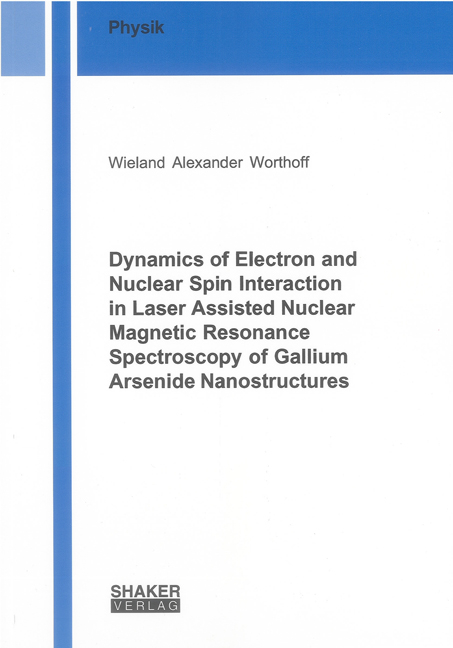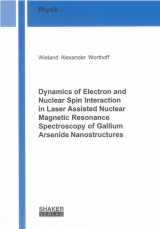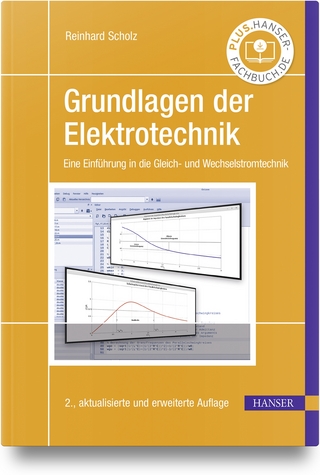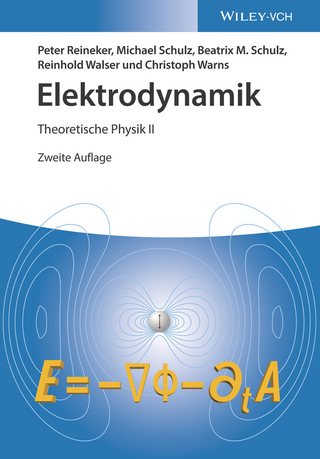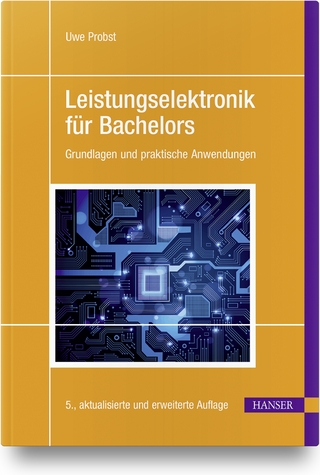Dynamics of Electron and Nuclear Spin Interaction in Laser Assisted Nuclear Magnetic Resonance Spectroscopy of Gallium Arsenide Nanostructures
Seiten
2011
|
1., Aufl.
Shaker (Verlag)
978-3-8440-0495-3 (ISBN)
Shaker (Verlag)
978-3-8440-0495-3 (ISBN)
- Keine Verlagsinformationen verfügbar
- Artikel merken
Gallium arsenide (GaAs) is a group III/V semiconductor and is a very important material for modern technology. It has a broad range of applications and it is extensively used in light emitting diodes, laser diodes [81, 37, 46, 40], sensors and detectors [81, 55] among others. In electronics it complements silicon devices, where its applications reach from robust logic circuitry and transistors to microwave waveguides [36, 81, 13]. Gallium arsenide also serves as a photovoltaic power source [37, 46, 40]. Especially due to the ever advancing technological applications, there is a keen scientific interest in new and improved methods for the analysis of the material properties, the development of new techniques and experimental schemes. Motivated by the timescale of the dynamics of a nuclear spin system in a solid state device, a very active field of research is the realisation of semiconductor-based devices for spintronics [56], quantum computation [45, 17, 88] and quantum memories [65]. GaAs is often used, not as a bulk semiconductor, but in nanoscale assemblies of different semiconductors, i.e. heterostructures. Due to their unique properties, heterostructures are of particular interest to ongoing academical and industrial research efforts. It is possible to construct devices with significantly different characteristics compared to those of the bulk material. Especially at nanometer-scale miniaturisation, quantum effects have a significant impact on the electronic and optical properties [81, 29].
In material analysis nuclear magnetic resonance (NMR) techniques are commonly applied to semiconductor systems and NMR is the natural choice to implement a spintronic device and operate on a quantum device. Nevertheless, applying classical NMR techniques can be challenging, especially when it comes to the detection of small nuclear spin sub-ensembles in nanometer-sized heterostructures or the probing of such sub-ensemble when a much larger group, such as a substrate, contributes as significant background. In these cases the sensitivity can be greatly enhanced by optical methods [1]. Laser assisted nuclear magnetic resonance methods can be divided into two major flavours, optically polarised and optically detected nuclear magnetic resonance. Both methods require the use of coherent light in order to polarise the electron spin system in the semiconductor. The electron spin system can exchange angular momentum with the nuclei, causing a polarisation of the nuclear spin system as well.
In material analysis nuclear magnetic resonance (NMR) techniques are commonly applied to semiconductor systems and NMR is the natural choice to implement a spintronic device and operate on a quantum device. Nevertheless, applying classical NMR techniques can be challenging, especially when it comes to the detection of small nuclear spin sub-ensembles in nanometer-sized heterostructures or the probing of such sub-ensemble when a much larger group, such as a substrate, contributes as significant background. In these cases the sensitivity can be greatly enhanced by optical methods [1]. Laser assisted nuclear magnetic resonance methods can be divided into two major flavours, optically polarised and optically detected nuclear magnetic resonance. Both methods require the use of coherent light in order to polarise the electron spin system in the semiconductor. The electron spin system can exchange angular momentum with the nuclei, causing a polarisation of the nuclear spin system as well.
| Erscheint lt. Verlag | 7.11.2011 |
|---|---|
| Reihe/Serie | Berichte aus der Physik |
| Sprache | englisch |
| Maße | 148 x 210 mm |
| Gewicht | 251 g |
| Einbandart | Paperback |
| Themenwelt | Naturwissenschaften ► Physik / Astronomie ► Elektrodynamik |
| Naturwissenschaften ► Physik / Astronomie ► Optik | |
| Schlagworte | Condensed Matter • Electron and Nuclear Spin System • Hyperpolarisation • Laser Physics • Nanophysics • NMR • Optical methods • Optical Nuclear Magnetic Resonance • Polarisation Enhancement • Semiconductor Devices |
| ISBN-10 | 3-8440-0495-5 / 3844004955 |
| ISBN-13 | 978-3-8440-0495-3 / 9783844004953 |
| Zustand | Neuware |
| Informationen gemäß Produktsicherheitsverordnung (GPSR) | |
| Haben Sie eine Frage zum Produkt? |
Mehr entdecken
aus dem Bereich
aus dem Bereich
eine Einführung in die Gleich- und Wechselstromtechnik
Buch | Hardcover (2024)
Hanser (Verlag)
34,99 €
Grundlagen und praktische Anwendungen
Buch | Hardcover (2022)
Hanser (Verlag)
34,99 €
